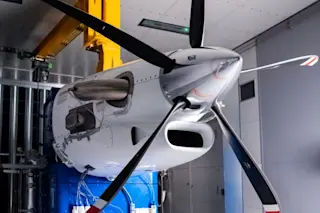Concept illustration of the TF-X flying car. Credit: Terrafugia A drone's flying test may help pave the way for flying cars. In early December, U.S. regulators gave their approval for unmanned hover tests of a miniature flying car model made by the company Terrafugia. Such testing would provide feedback for eventually building a full-size version of a flying car capable of hovering for vertical takeoff and landing. Contrary to some more breathless news headlines, this does not mean the U.S. Federal Aviation Administration (FAA) has cleared a hover-capable flying car for flight tests in U.S. airspace. Instead, Terrafugia only received special permission to operate a "one-tenth scale TF-X vehicle" under the classification of a small Unmanned Aircraft System weighing less than 55 pounds. The small-scale model of the TF-X prototype—basically a small drone—will have to operate at altitudes below 400 feet and at speeds under 100 miles per hour. Still, ...
One Small Step for Flying Cars
Explore the future of flying car technology with Terrafugia's TF-X prototype and its impressive hover capabilities.
More on Discover
Stay Curious
SubscribeTo The Magazine
Save up to 40% off the cover price when you subscribe to Discover magazine.
Subscribe













